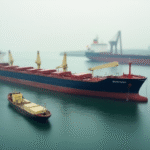Background on Mexico’s Fixed Investment
Fixed investment, a crucial economic indicator, measures the total value of capital goods—like machinery and equipment—purchased by businesses for upgrading, maintaining, or expanding their operational capacity. In Mexico, this metric is closely watched by economists and policymakers to gauge the country’s industrial health and future growth prospects.
Who is INEGI?
The National Institute of Statistics and Geography (INEGI) is Mexico’s official statistics agency, responsible for collecting, analyzing, and disseminating statistical data about the country’s economic, social, and demographic aspects. INEGI’s reports are authoritative sources of information for both domestic and international audiences interested in understanding Mexico’s economic landscape.
June 2025 Performance and Yearly Trend
According to the latest report released by INEGI on September 4, 2025, Mexico’s fixed investment (Gross Fixed Capital Formation) experienced a 1.4% decline in June compared to May. This drop marked the third setback for fixed investments this year, raising concerns about the Mexican economy’s trajectory.
Impact on Industries and the Broader Economy
Fixed investments are vital for industries to modernize their production processes, increase efficiency, and expand operations. A continuous decline in fixed investments can lead to stagnation or contraction in various sectors, ultimately affecting employment rates and overall economic growth. In Mexico’s case, this trend might signal potential slowdowns in manufacturing, construction, and other capital-intensive industries.
Key Questions and Answers
- What does the 1.4% decline in fixed investment signify? The drop indicates that businesses are investing less in capital goods, which could lead to reduced productivity and growth potential.
- Why is this trend concerning for the Mexican economy? Persistent declines in fixed investments can hamper industrial development, limit job creation, and slow down overall economic expansion.
- Which industries are most affected by this trend? Industries reliant on capital-intensive processes, such as manufacturing and construction, are likely to experience the most significant impacts.
- What measures can be taken to reverse this trend? Policymakers could consider tax incentives, streamlined regulations, and infrastructure investments to encourage businesses to boost their capital expenditures.






